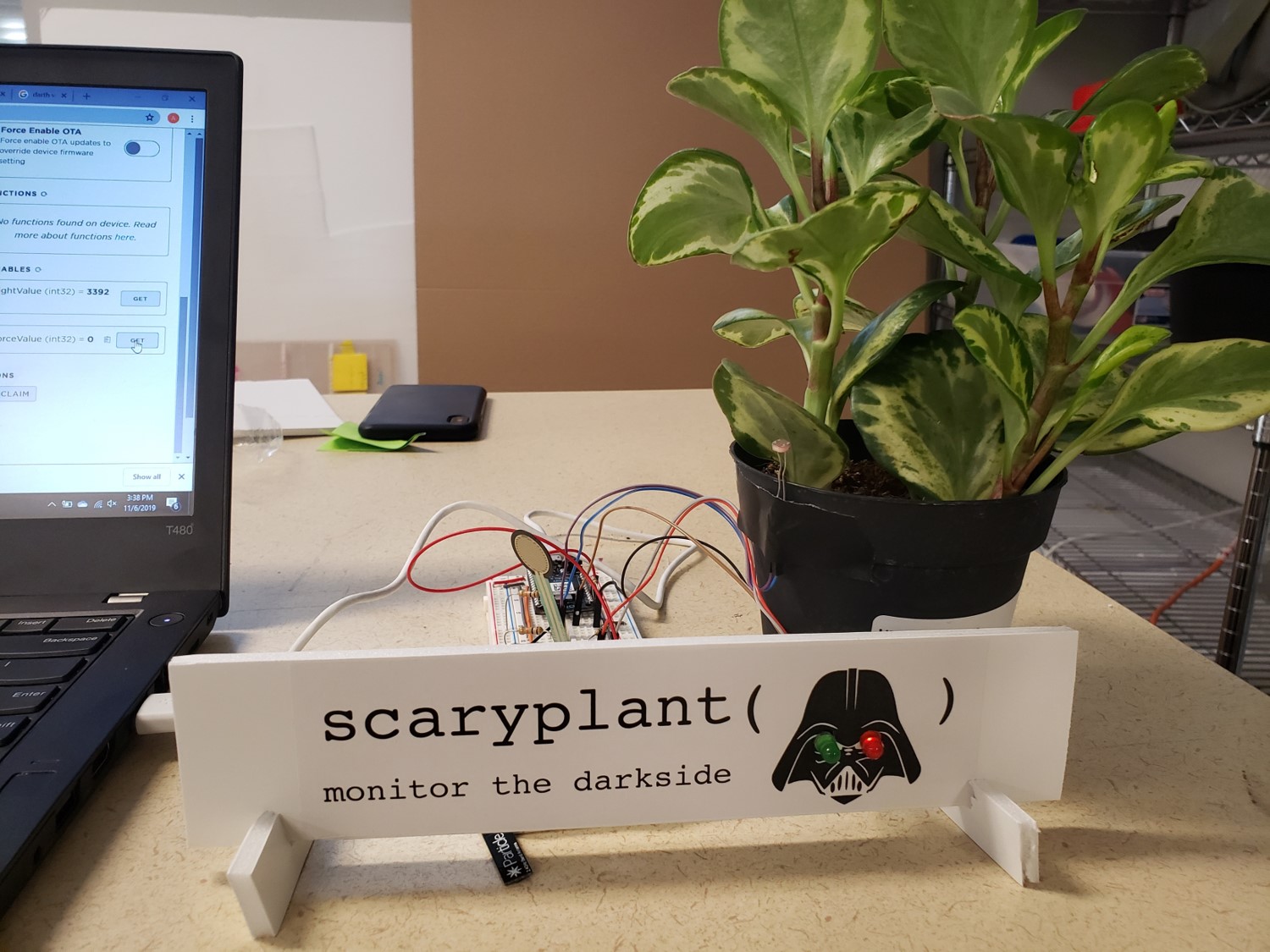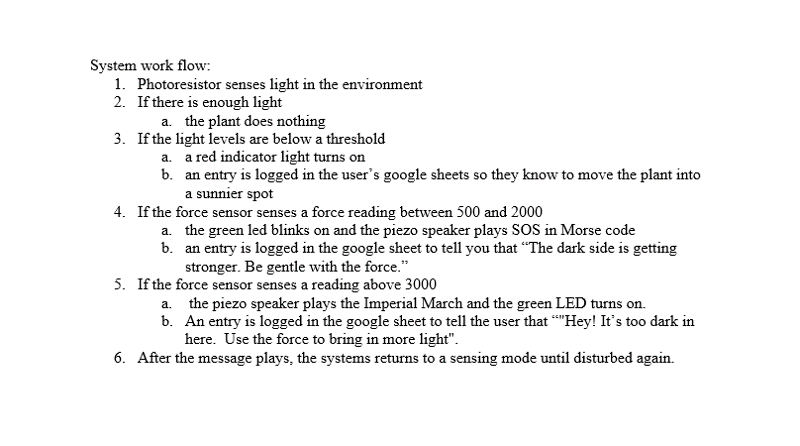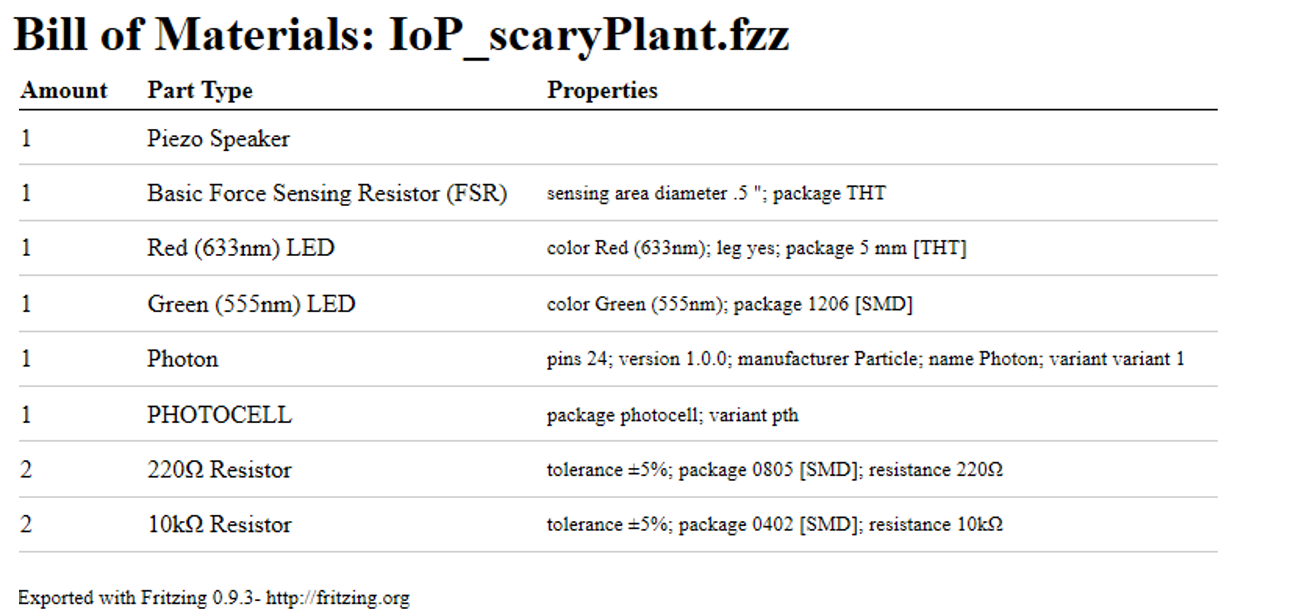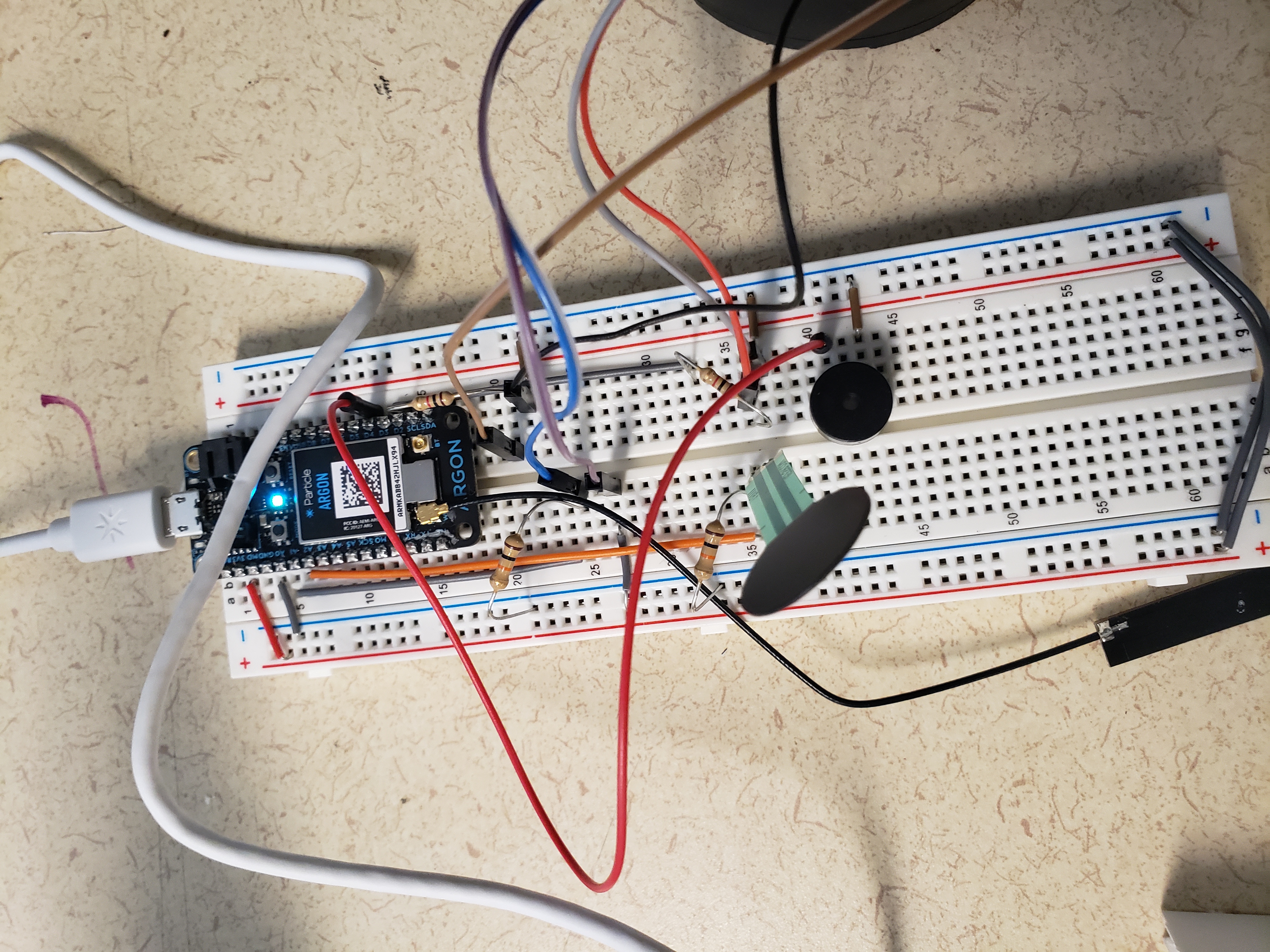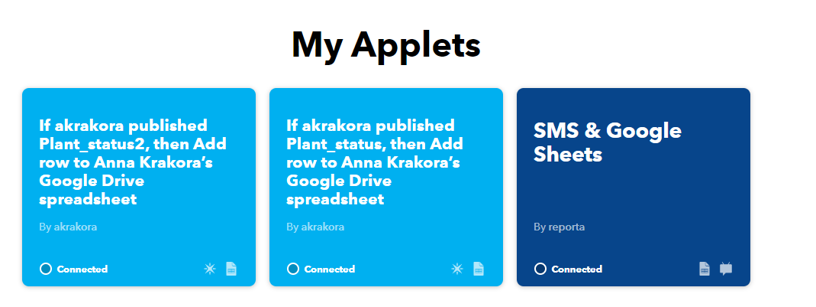Solution
Light is essential to your plant’s well being just as much as it is to yours. Keep an eye on the ever- encroaching dark side with a scaryPlant system. Warnings about low light levels and excessive force will be logged through your Google Drive so you’ll know when to change your habits.
One of the primary reasons that plants don’t survive in the apartments of busy graduate students (or Jedi knights) is that they are placed in spots where light levels are too low to sustain life. To solve this problem, a photo-resistor sits in the pot and sends a warning if light levels dip below a critical threshold. When this event occurs and the plant needs to be moved to a brighter environment, it sends a message to your Google Drive to remind you that it needs a little TLC.
Sometimes the dark side starts to encroach on your life, too. The scaryPlant’s force sensor will let you know if the dark side is gaining strength. If you touch the sensor with a death grip, it will send out an SOS message in Morse code so you know to chill out. If you escalate a step further with a force choke, you’ll hear the imperial march.
